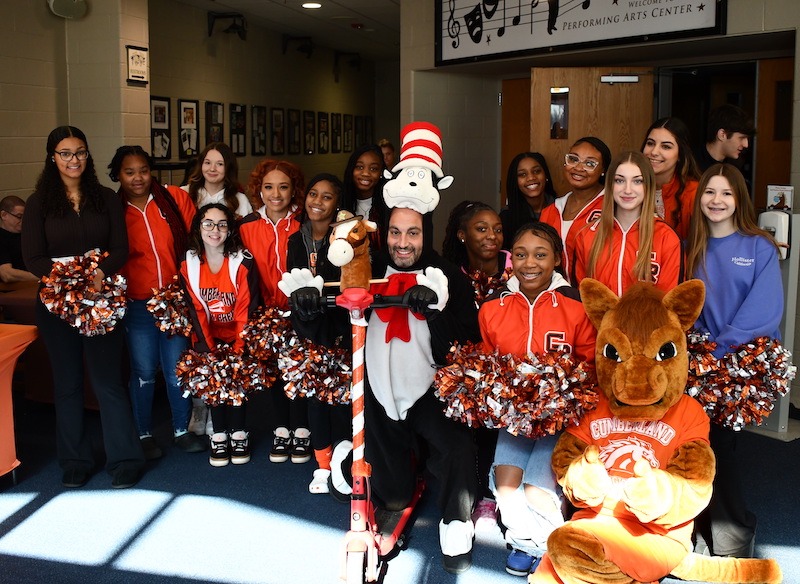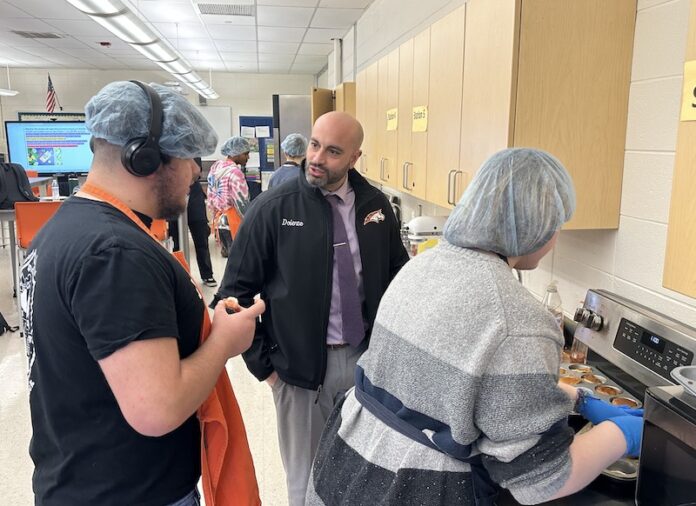Right now, Superintendent Carl Dolente is most excited about the expansion of the “Skilled Trades Program” at Cumberland Regional High School. Last year, the Cumberland Regional School District he leads launched a partnership with a local training facility to offer a select group of seniors the opportunity to receive hands-on training off-campus in the electrical field.
Two cohorts of 15 students were transported from the high school to the South Jersey Electrical Training & Apprenticeship facility to obtain their OSHA 10 and Lock-In/Lock-Out certifications, preparing them for a lucrative career as an electrician. “South Jersey is in dire need of skilled laborers, and this was our first step toward filling that void by preparing our high school students for jobs that are ready and waiting for them upon graduation,” Dolente tells District Administration.
Next school year, HVAC training will be added to the Skilled Trades Program to broaden the district’s impact on the local employment market. Here, Dolente talks about how he and his team are tackling today’s K12 challenges and what else is top of mind as he looks ahead to the 2023-24 school year.
1. What are the biggest challenges that your district is facing?
Coming back from the pandemic we have noticed that students have grown a new level of attachment to their hand-held devices. Cellphones have become a major distraction in classrooms. We are currently exploring creative ways to detach our students from their personal devices, which they were conditioned to utilize as their only means of communication, education, and entertainment for almost two years.
2. What are the top 3 goals for the rest of this school year and 2023-24?
- To improve the climate and culture of our district through a focus on diversity, equity and inclusion strategies, mental health programs, and professional development.
- To enhance our efficiency and effectiveness through administrative restructuring, aligning our building operations and management with our curriculum and instructional goals.
- To increase the number of 8th-grade students enrolled in our CTE programs by 10% while simultaneously increasing the number of completers and concentrators by 5%.
3. What have you learned about supporting student success and what works, and what doesn’t work?
When it comes to supporting success, there is nothing more important than building rapport with each and every child. Relationships within the classroom are essential to optimize student success on every level. When students feel connected to their teachers, administrators, counselors, and school community as a whole, they thrive and flourish both academically and emotionally. This is why our district’s mission statement is: “Creating connections to empower every student to be successful and fulfill their dreams”
What doesn’t work is putting students into structured, cookie-cutter boxes with a “one-size-fits-all” approach to education. We teach the importance of individuality, diversity, and being comfortable with who you are. It’s vital that we practice what we preach inside the classroom. For students to realize their full potential, a variety of pathways must be available to them. That is why the Cumberland Regional High School District is proud to offer seven different CTE academies, an early college high school program, and most recently, HVAC and electrical training in addition to our standard high school offerings.
4. What are you and your team doing to support students’ mental health?

During the pandemic, the district brought on two additional counselors at the high school. One is a full-time student assistance coordinator and the other is a school social worker. Together this dynamic duo treats hundreds of students on their caseload who are struggling with mental health issues stemming from childhood trauma and the typical stressors related to adolescent development.
We have also built SEL lessons into various areas of our curriculum and placed a heavy DEI focus in our social studies classrooms over the last two years. This year we brought in an amazing mental health program called “Challenge Day,” where every sophomore in our school was given access to this powerful, full-day workshop that addresses mental health on a multitude of levels. I encourage every school district to look into this program, as we have found the feedback from parents, students and staff to be overwhelmingly positive.
5. What’s at the top of your district’s list of must-have-ASAP?
An increase in funding. As our schools now face the end of all the COVID money we were given, many of the programs, positions, and technology will be hanging in the balance. Trying to find ways to sustain these important and much-needed improvements we were able to make over the past three years will take a great deal of creative budgeting and resourcefulness.
6. Do you have a good relationship with your school board? If so, what are the keys to collaborating effectively with the board?
I have an excellent relationship with my board. When I hear or read some of the horror stories my colleagues are faced with, I can’t help but feel incredibly blessed and fortunate to have such a supportive, student-focused BOE that understands the complexities of running an efficient and effective school district. There is not one person on our board that takes an individual approach or view when it comes to making decisions for our district. They do a phenomenal job of looking at the district as a whole, through a global perspective, not a singularly focused lens often associated with hidden agendas.
More from DA: Are lockers now irrelevant? Yes, for this principal’s nearly 4,000 students
I have found the keys to collaborating effectively with my board to be total transparency and humility. It is essential for there to be mutual respect for the roles we play respective to our different positions and an understanding that we will not always agree or see eye-to-eye on every issue, and that’s OK. It is also important to address their issues and concerns with a sense of urgency and provide them with immediate follow-up to inquiries or investigations.
7. Is your district experiencing teacher shortages? If so, how are they impacting your schools and how are you responding?
We don’t have any major shortages like our neighboring districts have experienced lately, however, we are certainly finding a lack of qualified candidates for specific teaching positions in the areas of math, science, and special education.
We have doubled our efforts to get our small district’s name out to the teacher pool by attending a variety of recruitment fairs held at local colleges/universities. We have also been successful in getting a few current employees certified in the areas of need by sending them back to school to complete the required coursework.










